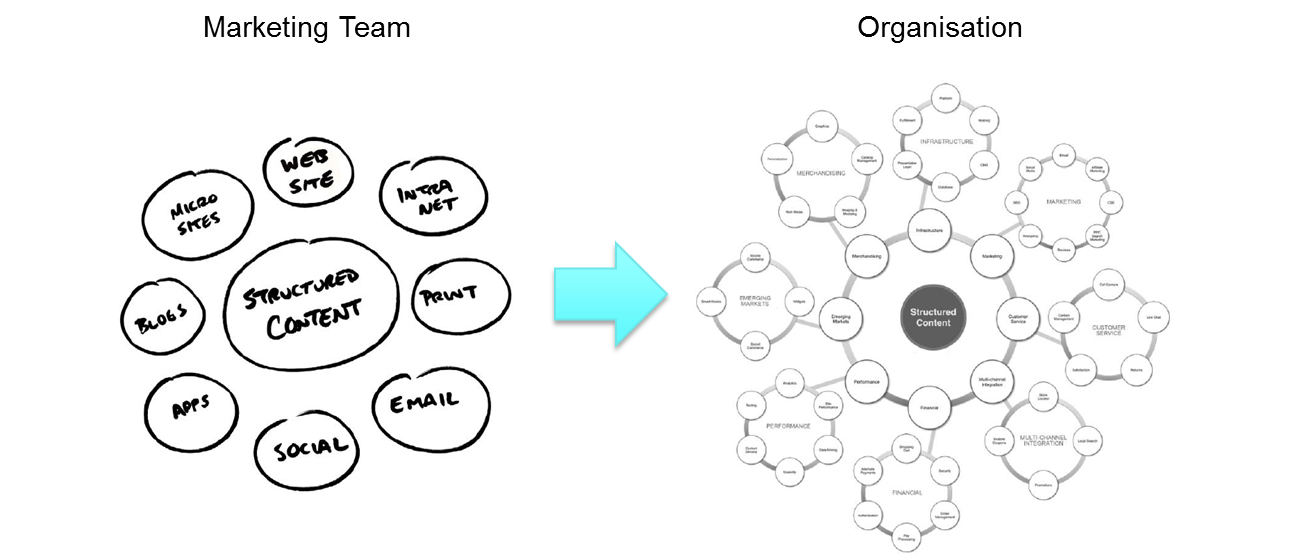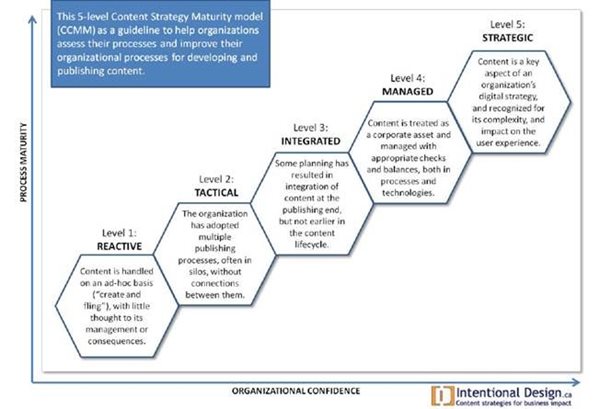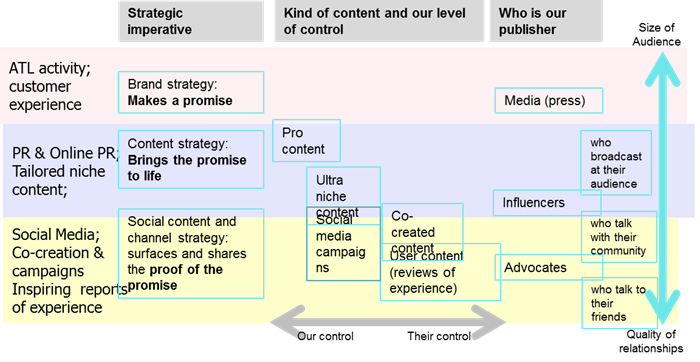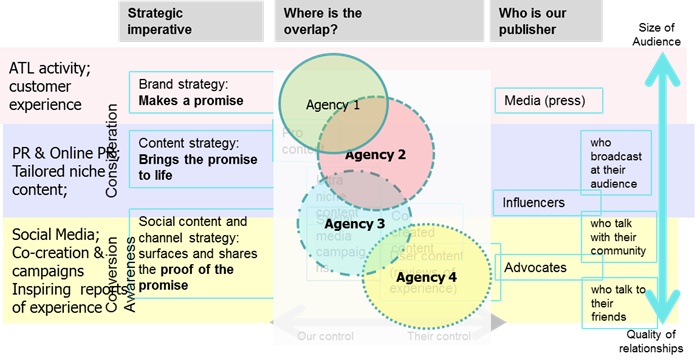The digital age has fundamentally changed the way brands and advertisers capture the imagination of their customers and prospects, we have shifted from a product-led world, pre 90’s approach to a consumer-led one post 90’s.
For a number of organisations this shift has caught them by surprise, the speed of change and change in consumer behaviour, has left them exposed and for some extinct.
A key impact content has had on the organisation, is it no longer sits solely with the marketing team, departments such as customer service, ecommerce, merchandising and IT all have some form of accountability for content and the process, Which of course makes content very difficult to control. You could argue there is a need for a Chief Content Officer which works across the wider business.

(Via seesparkbox)
To deliver a long term sustainable content strategy organisations need to understand the following 10 steps:
1. Defining What a Content Strategy is
The interpretation of content strategy is often mistaken for content marketing, a reason being marketers focus a large percentage of their time on the end product (the content itself) rather than think strategically and use the data to plan and align to the core business goals and objectives, and this is where the misunderstanding occurs between content strategy content marketing.
So to be clear content strategy is plan for the creation, delivery and governance of useful, usable content. Think of content marketing as a discipline to highlight gaps in the customer journey and overall marketing channel performance, for instance ranking in SEO, click through on paid search, engagement on social media platforms.
2. Where are you on the maturity model?
Once you have understood what content strategy it is good to understand where you sit on the content maturity model, this is a great starting point for any organisation, this is an iterative process moving through the levels one by one, trying to fast track to level 5 is unrealistic, painful and worst still, damaging to the brand and your existing customer base, the whole business needs to buy in to a content first approach, plus you will the majority of brands still stuck in level 2 and trying to find an integration solution

(Via Intentional Design)
3. The Strategic Position of Content
Now that you know what content strategy is and how advanced you are in the process, the next step is to understanding the role of content and the relationship with the channels will significantly improve campaign performance and reassure prospects at each stage of the buying process they are making the right decision. The chart below shows the focus on the quality of relationships through social media, being one of the few channels you can build relationships in real-time

4. Simplify the Agency Network
From my experience there is often overlap with agencies especially media buying ones, which can make the process complex and cluttered. Aligning agencies to their strengths and clear boundaries, gives brands a greater chance of delivering there content strategy

5. Content Objectives
For the content objectives to be delivered successfully they have to be aligned to the business strategy goals and objective, for instance if the business is driving market penetration when the content must be value focused through either price or customer service, if it is a product development focus, then there is focus on education and leveraging the brands trust, to move customers into another product category. Joe Pulizzi summed this about by asking brands, what is your “Content Marketing Mission Statement” this approach defines the target market and what the customer pains points you are aiming to resolve.
6. Driving free traffic
I have seen the impact on direct traffic from a joined up content strategy, a combination of brand-led content and direct response across a carefully range of digital and none digital channels, can have a real impact on building the relationship with the relationship with the customer and consistency of message and creative has a positive impact on direct and organic search traffic, whilst building trust on Google and deeper and more meaningful customer relationships to reach your business goals.
7. Why Are Keywords Important?
The keywords strategy should be a the heart of the content plan bringing together the wider marketing teams, creative, ecommerce, brand and digital, by spending time in Google Analytics and reviewing the site and keyword performance, from here you will be able to identify any gaps in the search rankings, from here marketers will be in a position to build a targeted keyword list for the content to plan to support keyword strategy across all the key platforms, web social and search etc, which will improve visibility in SEM.
8. Owned Versus Curated Content?
Not every brand or industry has a large content libraries that they own the rights too. Applying a content mapping process using defined topics and content types that will best deliver the overall strategy. Content curation and syndication can help brands fill the gaps in the plan, this of course can be more costly and restrictive depending on the arrangement, owning your content is an asset so sweat the asset across multiple channel for as long as engagingly possible.
9. Building Long Term relationships
It is very common for high street brands to pushed into “sales overnight” mode as sales suffer and margins are eroded, a hugely brand damaging approach, brands needs to think “customer relationship overtime” get to know your customers behaviours, interests, motivations and purchases as you go on the journey together, this doesn’t have to be achieved the first email communication.
10. Reporting On Results
Once you have established your goals and objectives, the next important step is to make sure your activity is tracked and the metrics are aligned to goals. This can be done by creating a dashboard which pulls in as many of your channels into one place as possible, Google Analytics is a good starting point for reviewing traffic, conversion and revenue performance, however for channel specific stats, such as share of voice or sentiment in social media, you will most likely have to go direct to the social platforms to receive this information. Frequency will vary campaign to campaign and business to business, monthly is usually a recommended time to allow the content to make an impact across the marketing mix.
Andy Letting is an IDM tutor and has worked in Digital Marketing for over 15 years. Andy specialises in content, mobile, programmatic and social media. To learn more about content marketing, and how you can put together a strategic approach, attend Andy's Content Marketing Strategy course, designed to provide a comprehensive understanding of the components that make up a content strategy.
Did you find this blog useful?
At the IDM we are passionate about educating marketers and providing resources to help advance your career.
If you are interested in enhancing your CV and upskilling, browse through our wider range of marketing courses and qualifications; from one-day short courses to post-graduate diplomas.
Our learning and development team will be happy to advise based on your needs and requirements.
